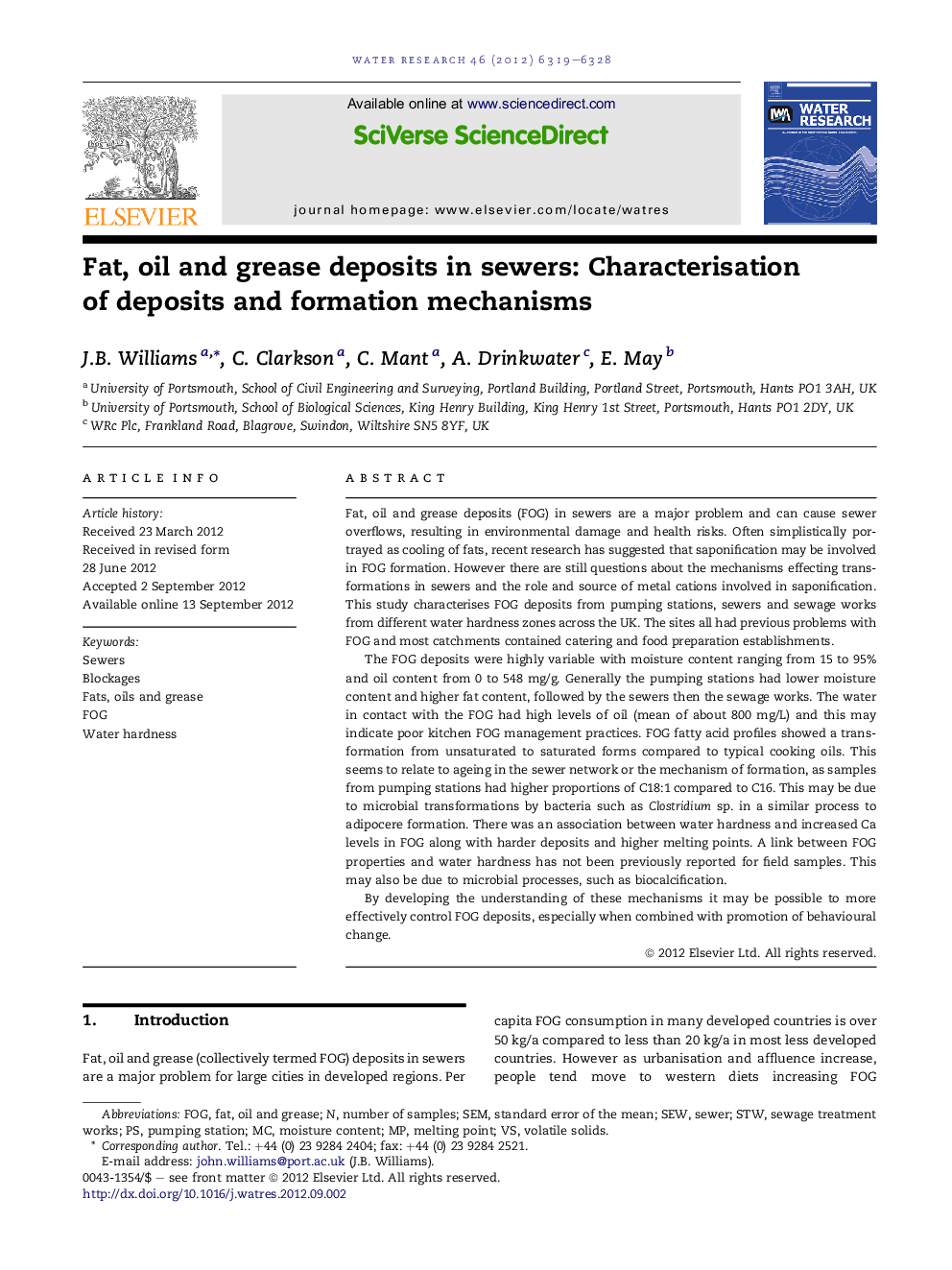| کد مقاله | کد نشریه | سال انتشار | مقاله انگلیسی | نسخه تمام متن |
|---|---|---|---|---|
| 4482448 | 1316859 | 2012 | 10 صفحه PDF | دانلود رایگان |

Fat, oil and grease deposits (FOG) in sewers are a major problem and can cause sewer overflows, resulting in environmental damage and health risks. Often simplistically portrayed as cooling of fats, recent research has suggested that saponification may be involved in FOG formation. However there are still questions about the mechanisms effecting transformations in sewers and the role and source of metal cations involved in saponification. This study characterises FOG deposits from pumping stations, sewers and sewage works from different water hardness zones across the UK. The sites all had previous problems with FOG and most catchments contained catering and food preparation establishments.The FOG deposits were highly variable with moisture content ranging from 15 to 95% and oil content from 0 to 548 mg/g. Generally the pumping stations had lower moisture content and higher fat content, followed by the sewers then the sewage works. The water in contact with the FOG had high levels of oil (mean of about 800 mg/L) and this may indicate poor kitchen FOG management practices. FOG fatty acid profiles showed a transformation from unsaturated to saturated forms compared to typical cooking oils. This seems to relate to ageing in the sewer network or the mechanism of formation, as samples from pumping stations had higher proportions of C18:1 compared to C16. This may be due to microbial transformations by bacteria such as Clostridium sp. in a similar process to adipocere formation. There was an association between water hardness and increased Ca levels in FOG along with harder deposits and higher melting points. A link between FOG properties and water hardness has not been previously reported for field samples. This may also be due to microbial processes, such as biocalcification.By developing the understanding of these mechanisms it may be possible to more effectively control FOG deposits, especially when combined with promotion of behavioural change.
Figure optionsDownload high-quality image (154 K)Download as PowerPoint slideHighlights
► A systematic multivariate study of FOG deposits at different locations.
► Physical properties and Ca content of FOG related to water hardness.
► Microbial processes indicated as important to FOG characteristics.
► Sewer transformations prevent fingerprinting of FOG sources.
► Formation mechanisms possibly similar to adipocere.
Journal: Water Research - Volume 46, Issue 19, 1 December 2012, Pages 6319–6328